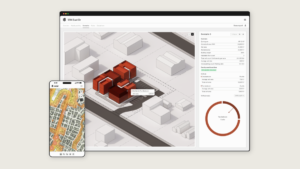[ad_1]
The future is going to be electric, but in the air and on the water that transition is proving more difficult than on land. Candela has taken a big step towards electrifying traditionally gas-powered institutions like ferries with its P-12, a hydrofoiling craft now in production that could make passenger vessels cleaner and quieter.
The company just took the craft (named for its 12-meter length, about 39 feet) for its first “flight” in Stockholm after announcing development earlier this year, alongside a fair bit of funding.
Candela’s boats are part of a new wave of watercraft that are increasingly similar to aircraft, using an underwater “wing” to produce lift rather than just pushing a V-shaped bow through the water. Startup Navier is looking at the same categories of medium-size passenger boats, while Boundary Layer aims to capture some of the Jet Ski market (and possibly cargo).
While hydrofoiling craft are not a new concept by any means, the latest generation takes inspiration from fighter jets and other high-tech aircraft that hand over stability control to automated systems. A pilot can’t be adjusting their ailerons 100 times per second to keep their fighter steady — such minute monitoring and changes are handled automatically.
Likewise in hydrofoiling boats like Candela’s, which adjust the angle of attack on the underwater wing at that rate, constantly responding to turbulence, weight shifts, and balance. The result is an incredibly stable ride driven entirely by wire. (They generate so little turbulence in the water, in fact, that they are being allowed to bypass speed restrictions in some places put in place to prevent wave damage. No wake? No problem.)
I had the chance to ride and drive a P-8 in Seattle’s Elliott Bay earlier this year and it’s both like and unlike driving a regular boat. Past a certain speed there is an automated “takeoff” sequence that takes it up to hydrofoiling speed, vastly reducing water resistance and increasing efficiency as the hull rises out of the water entirely. I was afraid it would be difficult to maneuver up there but it was no different from a regular boat, except that you’re kind of on stilts.

Candela’s P-8 leisure craft in Seattle.
The P-12 is the institutional follow-up to the P-8’s leisure craft. Designed to seat up to 30 people, it’s intended to replace or complement larger ferries powered mostly by diesel engines or generators. These huge, often decades-old craft are reliable and powerful (Seattle’s ferries pack hundreds of cars and people on board with no problem) but of course consume enormous amounts of fuel and pollute the waters they travel. Smaller ferries and water taxis operate at the very edge of profitability due to the cost of fuel and maintenance.
Such craft contribute around 3-4% of global CO2 emissions, but this number is expected to grow, perhaps more than doubling by midcentury, according to an EU study. And of course their effects on waterways and the animals that live there is proportionally greater.

Close up of the Candela P-12’s hydrofoil struts — the wing is beneath the water.
The P-12 is intended to replace smaller ferries, of course, being unable to accommodate cars. But with a top speed of 30 knots and a range of up to 100 km (about 62 miles), the vessels could easily take over many a pedestrian route. Some cities — like the company’s native Stockholm — are already embracing the change to electric boats, both out of an obligation to support clean energy and, eventually, to save money.
The 30-seat shuttle production version of the P-12 (it also comes in a luxury version with half as many, and an ultra-lux private edition) costs $1.7 million — not pocket change by any estimation, but quite affordable for a passenger vehicle of this size.
Add on the savings in fuel (Candela estimates the cost of powering the boats at 10% of an equivalent fuel vessel), a generally lower level of maintenance, and the fact that the whole thing can be run by one person instead of three or four… and the P-12 starts looking like a pretty smart investment.
Candela claims that the overall savings amount to about 50% “per passenger kilometer,” which leaves considerably more margin for operations, profit, and reinvestment.

Image Credits: Candela
“We’re not just offering a faster, more comfortable electric alternative to fossil fuel-powered vessels,” said Candela’s Erik Eklund in a press release. “We enable operators to make the switch to sustainable vessels that are cost-effective and profitable, a crucial step towards clean oceans and lakes.”
Navier recently toured numerous coastal cities to make a very similar pitch, and various operators and municipal officials are impressed with the direction things are going. It’s not so simple as just shelling out the cash — these things take time, and the boats in service already might still have years left on the water — but it does provide a realistic next step that isn’t just another gas-guzzling vessel that would fit right in 50 years ago.
Although the two companies are nominally competitors, there’s simply no way two relatively small startups could possibly meet the demand worldwide for electric watercraft together, so they’re more like friendly rivals working for a good cause.
Meanwhile, electrification is coming for international shipping and smaller boats as well — even converting that old dinghy in the garage if you have twenty grand. A quieter, cleaner future on the water is on the way.
[ad_2]
Source link



